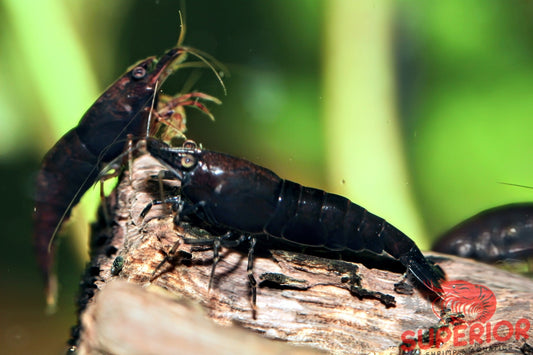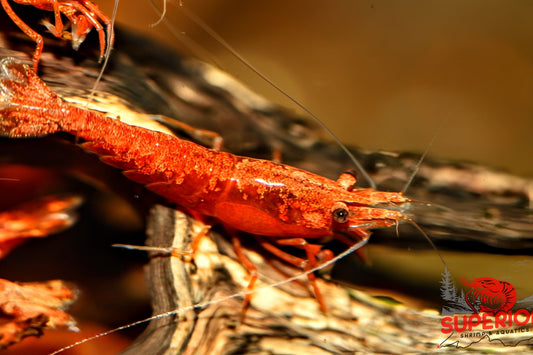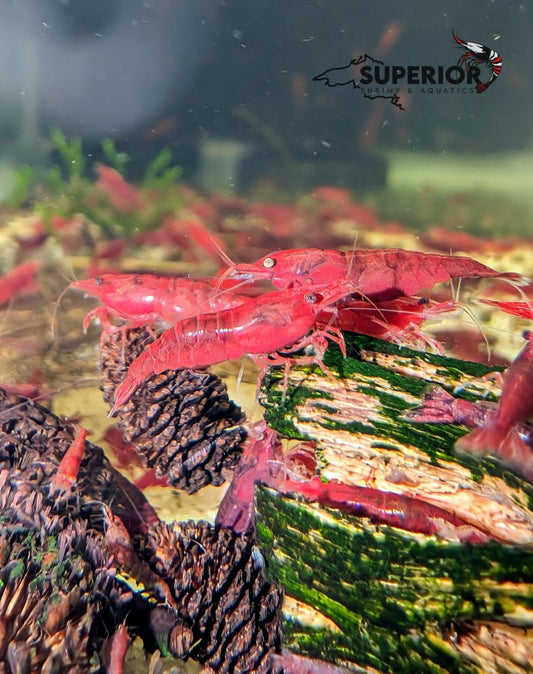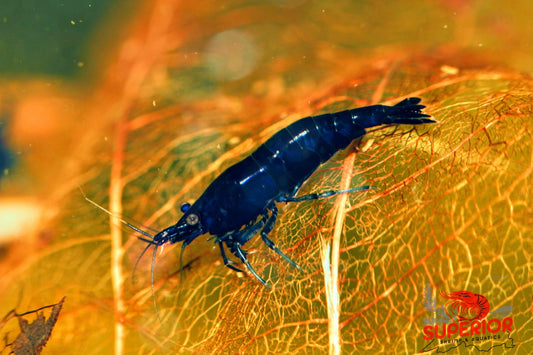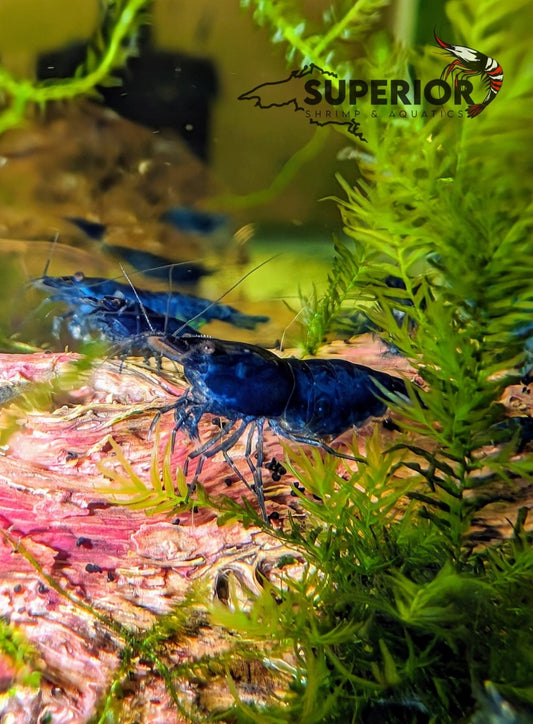Introduction: spirals in sapphire
There are few invertebrates that can bridge the divide between “practical cleanup crew” and “ornamental showpiece” quite like the Blue Ramshorn Snail. To most aquarists, ramshorns are ordinary, sometimes even dismissed as pests when they arrive uninvited. But selective breeding has transformed the humble ramshorn into a vivid jewel, its translucent spirals glowing with metallic blues that rival the colors of fish and shrimp.
In shrimp tanks and planted aquascapes, the Blue Ramshorn earns its keep as both a utility and an attraction. It grazes algae, scavenges detritus, recycles nutrients, and keeps biofilm growth balanced—all while adding aesthetic brilliance. Where Neocaridina shrimp are busy foraging across leaves and moss, Blue Ramshorns spiral across glass and pods, creating an ever-moving dance of sapphire shells.
To truly appreciate them is to look closer: their biology, breeding, water chemistry needs, and role in the aquarium all reveal that this morph is not just an accident of color—it is a selectively refined line, shaped for aquarists who value both beauty and function.
Origins and selective breeding
From ponds to aquaria
Ramshorn snails (family Planorbidae) are native to freshwater systems worldwide. Their adaptability, ability to breathe air through a pallial lung, and tolerance for varied conditions make them ubiquitous in ponds, rivers, and lakes. In the wild, they are usually brown, tan, or gray, blending seamlessly with leaf litter and detritus.
The Blue Ramshorn, however, is not a natural population. It is the result of selective breeding within the aquarium hobby. Breeders observed occasional individuals with translucent shells and darker bodies, a combination that refracted light into bluish tones. By refining these traits across generations—similar to how Blue Bolt Shrimp were stabilized from mixed Caridina lines—dedicated aquarists created a consistent morph.
Color variations within the line
Ramshorns now come in several ornamental morphs: pink, leopard-spotted, red, and blue. The Blue Ramshorn is prized for being both striking and rare compared to its albino cousins. The blue color arises not from pigments but from the transparency of the shell combined with the body’s darker tissues beneath. When viewed in strong light against dark aquascapes, the effect intensifies, giving shells a metallic or glassy glow.
This reliance on shell clarity means water chemistry and diet directly affect appearance. Poor calcium availability results in pitted, chalky shells that lose their luster, while stable, mineral-rich water produces the clean translucency that defines the morph.
Morphology and anatomy
Blue Ramshorns grow to a modest size—typically 2 to 2.5 cm across when fully mature. Their shells coil in a flat spiral (planispiral) pattern, hence the common name. Unlike conical snails such as Assassin Snails, ramshorns keep their axis coiled along a single plane, creating a disc-like silhouette.
Shell structure
The shell consists primarily of calcium carbonate reinforced with organic proteins. A healthy snail maintains translucence and smooth texture; deficiencies in water hardness lead to erosion, white scars, or shell fractures.
Shell integrity vs. KH stability (qualitative graph)
Optimum shell integrity occurs around 4–8 °dKH, with diminishing returns at very high buffering.
Internal anatomy
Like all pulmonates, Blue Ramshorns breathe via a lunglike cavity. They supplement this with cutaneous respiration and can survive in oxygen-poor waters by surfacing to gulp air. Their radula (toothed tongue) rasps algae and detritus from surfaces, leaving distinctive grazing trails across glass and plant leaves.
Behavior and ecological role
Blue Ramshorns are perpetual grazers. In a planted aquarium, they travel slowly but continuously across all surfaces: glass, botanicals like Lotus Pods, mosses such as Java Moss, wood, and substrate.
Their ecological contributions are significant:
-
Algae control: They prevent algae films from overwhelming surfaces, complementing shrimp grazing.
-
Detritus recycling: By consuming decaying leaves and leftover food, they recycle nutrients into forms usable by plants and microbes.
-
Bioindicator role: When oxygen is low, populations cluster near the surface; when waste accumulates, populations explode. Both behaviors serve as early-warning systems for aquarists.
Care and water chemistry
Blue Ramshorns are hardy but thrive best under stable, mineralized water. Their requirements align closely with shrimp husbandry, making them perfect tankmates.
Water Parameter Reference Table
| Parameter | Ideal Range | Tolerances | Notes |
|---|---|---|---|
| Temperature | 70–78 °F (21–26 °C) | 65–82 °F | Warmer temps accelerate reproduction |
| pH | 7.0–7.6 | 6.5–8.0 | Neutral to slightly alkaline ideal |
| GH | 6–12 °dGH | 4–20 | Supplies calcium/magnesium for shells |
| KH | 4–8 °dKH | 3–12 | Prevents pitting, stabilizes pH |
| Ammonia/Nitrite | 0 | 0 | Even low levels are toxic |
| Nitrate | < 30 ppm | < 50 ppm | Higher levels stress shells and reproduction |
For a detailed explanation of KH, buffering, and their relationship to shell health, see the Neocaridina Environment Guide.
Feeding and nutrition
Although often called “algae eaters,” Blue Ramshorns are omnivores with wide dietary flexibility. In balanced tanks, they thrive on algae, biofilm, and detritus.
Feeding contribution chart
Supplement their natural grazing with:
-
Shrimp and snail pellets from the Food & Supplements Collection.
-
Blanched vegetables (zucchini, spinach).
-
Crushed cuttlebone for extra calcium.
Regular supplementation ensures strong shells and vibrant coloration.
Reproduction and population dynamics
Blue Ramshorns are prolific hermaphrodites. A single snail can establish a colony, though breeding accelerates when two or more are present.
Egg capsules
Eggs are laid in gelatinous clutches on surfaces such as glass, leaves, or hardscape. Each capsule contains 10–20 embryos. At 75 °F, eggs hatch in 7–14 days, releasing miniature snails that immediately begin grazing.
Growth curve
Population growth is exponential under abundant food. Left unchecked, numbers can surge. But in balanced tanks, populations stabilize, limited by available nutrients.
Population control strategies
-
Avoid overfeeding shrimp/fish.
-
Remove excess clutches manually.
-
Introduce Assassin Snails for natural predation.
Compatibility
Blue Ramshorns are peaceful and highly compatible. They thrive alongside Neocaridina shrimp, Caridina shrimp including Blue Bolts, and even delicate shrimplets.
They also coexist well with small community fish: rasboras, guppies, tetras, and bettas. Avoid keeping them with snail-predatory species such as loaches, puffers, or large cichlids unless population reduction is the goal.
Aquascaping and functional roles
Blue Ramshorns are both functional and ornamental in aquascapes. Their shells contrast against greenery, botanicals, and dark substrates. They patrol across Lotus Pods, graze biofilm from Java Moss, and add movement along driftwood and stones from the Hardscape Collection.
Functional aquascaping roles
-
Prevent detritus buildup under moss carpets.
-
Clean biofilm from pods and cones.
-
Provide visual activity in foreground and midground zones.
Because they are visible grazers, they remind aquarists of ecological balance: where shrimps dart and pods tan the water, Blue Ramshorns glide with steady, calming motion.
Ethics, myths, and management
The “pest” misconception
Ramshorns are often mislabeled as pests when they appear uninvited on plants. But the Blue morph highlights their ornamental potential. Populations only explode when food is abundant, meaning they reveal rather than cause imbalance.
Ethical breeding and sales
As selectively bred morphs, Blue Ramshorns should be sold responsibly, with clear labeling to avoid confusion with common brown ramshorns. Offering them through specialty shops like Superior Shrimp & Aquatics helps shift perceptions from “weed snail” to valued companion.
Management practices
-
Control population by moderating feeding.
-
Remove egg clutches if desired.
-
Rehome excess snails responsibly.
-
Use Assassin Snails as a biological control.
Shop the essentials
Blue Ramshorn Snails
Neocaridina Shrimp
Caridina Shrimp
Blue Bolt Shrimp
Lotus Pods
Java Moss
Hardscape Collection
Food & Supplements Collection
Assassin Snail Guide
Footnotes and sources
[1] Dillon, R. T. (2000). The Ecology of Freshwater Molluscs. Oxford University Press.
[2] Ng, T. H., & Tan, S. K. (2013). Ramshorn snails in ornamental aquaria. Aquatic Sciences Review.
[3] Superior Shrimp & Aquatics. Neocaridina Environment Guide.
[4] Superior Shrimp & Aquatics. Assassin Snail Guide.
[5] Superior Shrimp & Aquatics. Ramshorn Snail Product Page.
